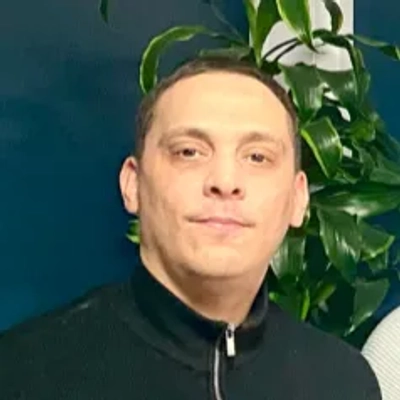How to Distribute Content for Different Sales Funnel Stages: 4 Examples
Content distribution plays a crucial role in guiding potential customers through the sales funnel. This article explores effective strategies for distributing content across different stages of the sales process, drawing on insights from industry experts. Discover how to tailor your content, align it with the customer journey, and maximize its impact at each funnel level.
- Tailor Content to Funnel Stages
- Match Content with Customer Journey
- Align Value to Sales Process Stages
- Distribute Content Across Funnel Levels
Tailor Content to Funnel Stages
I've built a content distribution system that matches each stage of the funnel with the right format and platform. Here's exactly how I approach it:
For top-of-funnel awareness, I use "cringe content" on LinkedIn. These are controversial, personality-driven posts that might seem unrelated to what I sell (like stories about being banned eight times or traveling to Paraguay with a table on my shoulder). These posts aren't designed to convert - they're meant to make people remember me.
I recently posted a 10-minute LinkedIn video ranting about the "dark underbelly" of LinkedIn influencers using engagement pods. It got huge reach not because it was selling anything, but because it was raw and different.
For middle-funnel consideration, I create high-value lead magnets. Once someone knows who I am, I transition them to more tactical content with an immediate takeaway. This isn't selling yet - it's demonstrating expertise.
My "Post Roast Prompt" analyzes LinkedIn content. I offer this for free in exchange for email addresses. Last month alone, I generated 1,571 lead magnet downloads that moved people from casual followers to my email list.
For bottom-funnel decision, I use live workshops and direct outreach. This is where I actually show my process in action and make direct offers.
My "Write with ChatGPT LIVE Workshop" demonstrates my entire AI writing workflow in real-time. People who attend these already know and trust me, so conversion rates are 5-8x higher than cold traffic.
The secret most people miss? Distribution channels should narrow as you move down the funnel. I might reach 100,000 people with a LinkedIn post, capture 1,000 emails with a lead magnet, get 100 people in a workshop, and convert 10 into clients through direct messages.
Each stage becomes more personal and high-touch, which is the opposite of what most businesses do.

Match Content with Customer Journey
When it comes to content distribution, I believe in tailoring content to match the specific needs of customers at each stage of the sales funnel: awareness, consideration, and decision. The key is to provide valuable, relevant content that moves the prospect forward in their journey.
At the top of the funnel (awareness stage), prospects are just discovering their problem or need. I focus on creating educational content that introduces them to the topic without a hard sales pitch. This might include blog posts, infographics, or social media posts designed to grab attention and generate interest. For example, a blog post titled "5 Common Challenges in [Industry] and How to Overcome Them" helps raise awareness of a problem they might not have realized they had.
In the consideration stage, prospects are evaluating their options and looking for solutions. Here, I focus on more detailed content that provides value and positions our offering as a potential solution. This could include case studies, whitepapers, or webinars that demonstrate how our product or service has solved similar problems for others. For example, a case study showcasing how we helped a similar business streamline their processes would resonate at this stage.
Finally, in the decision stage, prospects are ready to make a choice. Content here is more focused on conversion and building trust. I'll use product demos, customer testimonials, and free trials to encourage them to take the final step. A demo video showing exactly how our solution works in action would be a great fit for this stage.

Align Value to Sales Process Stages
When it comes to content distribution for different stages of the sales funnel at Kalam Kagaz, my strategy is centered around creating valuable, relevant content that aligns with where the potential customer is in their journey. The key is to provide them with what they need at that moment, whether it's awareness, consideration, or decision.
Top of the Funnel (Awareness): At this stage, people are just discovering the problem they face and researching potential solutions. The content I use here focuses on educating and building awareness. For example, I share blog posts or social media content that highlight common challenges, trends, or insights in the book-writing and publishing space. This helps to engage prospects early on and establishes credibility. For Kalam Kagaz, I might share posts like "Top 5 Common Mistakes New Authors Make."
Middle of the Funnel (Consideration): As prospects start evaluating their options, content should focus on showing how your solution stands out. For me, this involves case studies or webinars that highlight the success others have had with our book writing services or publishing and marketing packages. These assets help build trust by showcasing measurable results.
Bottom of the Funnel (Decision): At this stage, prospects are ready to make a decision. I use detailed product pages, consultation offers, and free trials to provide the final nudge. This could be a personalized, one-on-one consultation to discuss their specific book project. It's all about offering them a direct path to purchase and taking action.
For me, the key is to align each piece of content with where the audience is in the sales process, ensuring they get the right value at the right time.
Distribute Content Across Funnel Levels
Here's how I break down content distribution across the sales funnel, with real examples for each stage:
Top-Top of Funnel:
Very broad, informational content like how-tos, lexicon-style definitions, or industry stats — e.g., "Marketing Budget Benchmarks for SaaS Startups." This brings in wide, general traffic.
Top of Funnel:
Content that answers questions but adds more opinion or insight — e.g., "SEO Trends to Watch in 2025." It's still educational, but with more positioning and thought leadership.
Middle of Funnel:
Comparison and list content — things like "HubSpot vs. Salesforce" or "Top 10 Marketing Agencies in NYC." This attracts people actively researching solutions.
Bottom of Funnel:
Clear intent content like "HubSpot Agency in Berlin" or "Best SaaS Tool for Task Management." These are directly tied to commercial interest and purchase intent.
Quote Phase:
Personalized quote landing pages, PDFs, and even well-written terms and conditions — I've actually gotten compliments on those. You can also go deeper by adding exit surveys or testimonial requests as part of the process.



